The post How Artificial Intelligence leads us forward? appeared first on Magnimind Academy.
]]>Major impacts of artificial intelligence
![]()
While we’re probably heading toward a future where machines might become intellectually equal or superior to humans, let’s take a look at how artificial intelligence is transforming the present world now.
- Highly personalized production: Advancements in artificial intelligence together with software intelligence are empowering businesses to offer products and services that are extremely relevant to individual customers. According to studies, brands that are willing to personalize products are able to develop greater trust with their consumers. Studies also revealed that a huge percentage of customers are willing to have trusted brands use their personal data to receive targeted and tailored products, offers, and recommendations.
- No more repetitive tasks: Repetitive tasks aren’t only monotonous but consume a huge amount of time and energy of the human workforce as well. With the help of artificial intelligence, many of these tasks are being carried out by machines as they can think faster than humans and are capable of multi-tasking. Additionally, as their time and speed are calculation based parameters, those can be adjusted, if required.
- Almost flawless medical diagnosis: Artificial intelligence has enabled the healthcare industry to effectively analyze possible advert scenarios by advancing the process of finding solutions or preventing. It has also made healthcare accessible for those who’ve had unequal access until today, because now it has become possible to build a personalized way for inclusion for each one.
- Personalized education: It’s a fact that it’s impossible for a single educator to work with each student at once. With the emergence of a personal AI assistant or tutor, today it has become possible for students to get one-on-one, additional help in areas of required development. While some educators may fear the idea of artificial intelligence replacing them in the future, the reality is, human intelligence and AI working in tandem will only drive us forward.
Parting Thoughts
Virtually, there’s nothing that artificial intelligence won’t be able to support but it requires human expertise to oversee, assign its responsibilities, and identify its limitations. When the best parts of AI would be coupled with the best parts of humanity, it’ll take us to a different level together than either one could do individually. So, it can be safe to say that it’s probably the best time to learn artificial intelligence. A comprehensive AI training would not only help you get an edge in today’s competitive job market but will make you future-proof as well.
. . .
To learn more about artificial intelligence, click here and read our another article.
The post How Artificial Intelligence leads us forward? appeared first on Magnimind Academy.
]]>The post What can we do with Artificial Intelligence? appeared first on Magnimind Academy.
]]>1- E-learning
![]()
Artificial Intelligence is changing e-learning drastically. You can use AI to personalize learning for every individual student. Rather than having the same study and training materials for each student, you can use AI-enabled hyper-personalization to create a custom learning profile of every student and then customize the study materials based on their preferred style of learning, ability, and experience. This would be a boon to educators as they can take advantage of augmented intelligence assistance that offers them an extensive variety of materials leveraging the same core curriculum and yet, let them meet the specific needs of every student. Apart from helping deliver smart content and personalized learning, you can also use artificial intelligence to automate administrative tasks like evaluating homework, grading exams, offering valuable responses to students, etc.
2- E-commerce platforms
![]()
Artificial Intelligence can help in predicting customers’ likes and preferences based on their past shopping behavior. Amazon’s artificial intelligence has been doing it for a long time and the e-commerce giant has given its sales a massive boost with AI’s predictions and suggestions. What’s impressive is that more than a third of the company’s sales are attributed to its recommendations. With the passage of time, Amazon’s algorithms have become more and more sophisticated, precise, and useful. In case you decide to join an e-commerce platform after your AI training, you can use artificial intelligence to find out your customers’ preferences and shopping behaviors with the most incredible precision.
Though Amazon hasn’t been there yet, the company is planning to put into practice a shipping system using AI that delivers products even before you put a request for them or know you require them.
3- OTT platforms
![]()
OTT (over-the-top) platforms have changed the way we consume audio or video. Over the past few years, a significant consumer shift from traditional audio/video content to home entertainment via Internet-connected devices has been observed. With the trend predicted to grow in the coming years, the war has heated up among streaming service providers like Netflix, Amazon, etc. As it’s a big challenge to acquire and retain OTT customers, especially in a highly competitive market, the leading players are using artificial intelligence to build a robust recommendation engine and content discovery mechanism that helps to deliver consistent user experience. After you learn artificial intelligence and complete your AI training, you too can take a plunge into the world of OTT platforms to experience first-hand how it could help decide the fate of a platform by helping to offer content and an experience that’s a notch above the rest.
. . .
To learn more about artificial intelligence, click here and read our another article.
The post What can we do with Artificial Intelligence? appeared first on Magnimind Academy.
]]>The post How has machine learning and AI changed and continue to change the finance industry? appeared first on Magnimind Academy.
]]>Here’re the major ways through which the finance industry is leveraging the power of artificial intelligence and machine learning.
1- Better risk management
![]()
Probably the biggest impact of artificial intelligence and machine learning on the finance industry can be found when it comes to risk management. While traditional software applications can predict creditworthiness based on the static information obtained from financial reports and loan applications, implementation of machine learning technologies can help financial institutions to go much further. Algorithms identify the signs of probable future issues and analyze a client’s history of risk cases to help the authorities make an informed decision. They’re also able to identify present market trends together with relevant news items which can affect the ability of a client to pay.
2- Improved data security
![]()
Data security has always been at the top of the list of concerns for any financial institution. And if you consider the number of data breaches occurred during recent years, there’re reasons to be concerned. Traditional security tools aren’t capable of identifying modern sophisticated cyberattacks. To mitigate security risks, financial institutions implement advanced technologies like machine learning. Security solutions powered by machine learning are come with unique abilities to secure the financial data. The combined power of big data capabilities and intelligent pattern analysis gives machine learning security technology a robust advantage over traditional tools.
3- Enhanced customer experience
![]()
Like all other industries, the financial industry is also focusing on developing the top line by implementing advanced methods to offer custom services and better experience to customers. Many financial institutions have already introduced chatbots powered by artificial intelligence abilities that can analyze the voice of a customer and converse accordingly. With the help of machine learning and big data, these chatbots understand how to respond to the questions of customers’ – from transaction-specific questions to onboarding concerns. Additionally, technologies backed by artificial intelligence and machine learning are capable of making product recommendations and handling customer requests.
Parting Thoughts
![]()
In the finance industry, the disruption triggered by artificial intelligence and machine learning is increasing exponentially and toward greater economic impact than ever, both on the customers and the industry. By addressing all the major operational aspects and adding advanced features, these technologies are not only revolutionizing the entire industry but also improving the financial health millions of customers involved in the process. And from a business perspective, these technologies are driving a more fundamental and deeper shift in the finance industry.
. . .
To learn more about machine learning, click here and read our another article.
The post How has machine learning and AI changed and continue to change the finance industry? appeared first on Magnimind Academy.
]]>The post What is the best way to learn Artificial Intelligence for a starting student? appeared first on Magnimind Academy.
]]>1- Start with the basics
![]()
The first thing you should focus on is to learn a programming language. While there’re lots of languages that you can begin with, Python is preferred by many aspiring artificial intelligence professionals because it comes with libraries which are better suited to ML (machine learning – one of the happening subsets of artificial intelligence). There’re some good ways to learn Python – from self-learning to attending a program. If you don’t have any idea about programming languages, you should go with the latter option.
2- Leverage the power of videos and podcasts
![]()
Once you’ve obtained some programming language knowledge, the next step is listening to useful videos and podcasts related to artificial intelligence. They’ll help you gain more comprehension about the present trends and happenings in the industry, emerging technologies and how they’re being implemented in the field, their effects in the real life, and many more. Remember to get some amount of familiarity with the concepts and jargons involved as these videos and podcast often come with them mentioned.
3- Attend an artificial intelligence course
![]()
This is probably the best and most effective way to learn artificial intelligence. A dedicated course on the subject will greatly help you in learning about the world of artificial intelligence. It’ll help you get immensely valuable exposure to the required skills. Usually, this type of courses brush up on the fundamentals you’ve obtained already and then help you develop the technical skills needed to work with artificial intelligence in today’s professional world.
4- Keep on reading articles and books on artificial intelligence
![]()
While attending a guided course on artificial intelligence will prepare you to enter the professional world, lots of amazing articles and books are also available which would help you strengthen your theoretical knowledge.
5- Keep on practicing
![]()
Like any other field, proper practice is the best way to learn artificial intelligence. So, it’s extremely important to look for projects and obtain practical knowledge while doing them. Apart from the projects you’ll be in an artificial intelligence course, you should constantly work on other related projects not only to build your portfolio but to strengthen your knowledge about the field as well.
Final takeaway

Artificial intelligence is one of the most promising technologies we’ve these days and billions of dollars are being invested in startups or artificial intelligence projects. The technology has the ability to transform almost every industry to a great extent. So, start your process of learning it as soon as possible to get prepared to join the artificial intelligence revolution.
. . .
To learn more about artificial intelligence, click here and read our another article.
The post What is the best way to learn Artificial Intelligence for a starting student? appeared first on Magnimind Academy.
]]>The post What are the main differences between artificial intelligence and machine learning? appeared first on Magnimind Academy.
]]>![]()
- Artificial intelligence is the intelligence demonstrated by machines. Any machine that understands its environment and is able to take actions that increase its chances of achieving some goals, can be described as an artificial intelligence-enabled machine. On the other hand, machine learning is one of the present applications of artificial intelligence.
- When machine learning goes beyond simple programming and can mirror and interact with people, even on the fundamental level, artificial intelligence comes into the picture. Though artificial intelligence needs machine learning to optimize decision, the former is the step beyond the latter. Artificial intelligence utilizes what it has obtained from machine learning to simulate intelligence.
- In artificial intelligence, a machine learns by gathering knowledge and understanding how to apply it. Here, the goal is to increase the chances of finding an optimal solution. It’s the study of training computers to try to do things which a human can do better at present. On the contrary, in machine learning, algorithms obtain the skill or knowledge via experience. It depends on big datasets to keep on reminding the data to identify common patterns.
- Based on capabilities, artificial intelligence can be distributed into two categories namely general AI and narrow AI. Based on learning methods, Machine learning can be distributed into three categories namely supervised learning, unsupervised learning, and reinforcement learning.
- The objective of artificial intelligence to develop smart systems like humans that can solve complex problems. The goal of machine learning is to let a machine learn from massive datasets so that they can provide accurate output.
- The key applications of artificial intelligence include customer support using chatbots, Siri, intelligent humanoid robot etc. The key applications of machine learning include Google search algorithms, online recommender system, Facebook friend tagging suggestions etc.
- Artificial intelligence holds a broad range of scope while machine learning comes with a limited scope.
- Artificial intelligence deals with structured, unstructured, and semi-structured data while machine learning works with only structured, and semi-structured data.
![]()
Both machine learning and artificial intelligence can leave valuable business implications. In the context of the coming future, both are imperative to our society. A robust understanding of both of these fields will be extremely important to comprehend the rapidly changing business world and how the devices we use everyday work. The promises and value of both these fields are being materialized because of each other. If you’re an aspiring candidate looking to step into these fields, this is probably the best time to begin your journey. As advancements and adoptions of both artificial intelligence and machine learning continue to accelerate, one thing can be assumed for sure – the impact will be profound.
. . .
To learn more about machine learning, click here and read our another article.
The post What are the main differences between artificial intelligence and machine learning? appeared first on Magnimind Academy.
]]>The post AI and Machine Learning facilitate people’s lives in terms of many aspects appeared first on Magnimind Academy.
]]>But before delving deeper, let’s have a quick look at what are AI and machine learning basically.
1- AI and machine learning – What they are
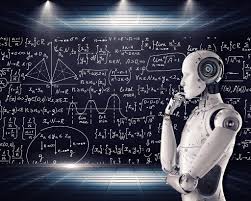
Fundamentally, AI or artificial intelligence refers to the intelligence demonstrated by the machines. And ML or machine learning is a way using which professionals achieve AI. Machine learning can be considered as the ability of machines to learn utilizing statistical techniques without being programmed explicitly.
2- Ways AI and machine learning are facilitating average people’s lives
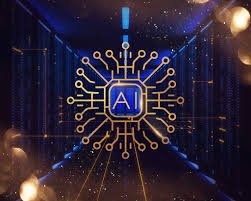
The concepts of AI and machine learning aren’t completely foreign to us as they have been heavily explored by popular media. There are lots of movies which have shown us a world where AI-enabled robots and machines hold the dominating power. And these have triggered, to a good extent, lots of negative impressions about AI and machine learning among the average people. However, despite how negatively movies demonstrate the power of AI and machine learning, these technologies are truly transforming average human lives into better ones. Let’s explore the most common aspects that are being impacted by AI and machine learning.
2.1- Banking and financial services
![]()
It’s hardly possible to count the number of people that have bank accounts. In addition, just consider the number of their associated facilities like credit cards which are in circulation. Now imagine how many hours human employees of these institutions would have to invest to sift through the transactions that are performed every day? And how much time and effort it would take to identify an anomaly? With the help of AI and machine learning, a huge number of banks and financial institutions have become able to review the quality of various applications and to analyze and predict risks, in an effort to make informed decisions. The so-called traditional industry is implementing AI and machine learning to increase user engagement. High-end technologies like predictive analysis, chatbots, voice recognition etc are helping minimize the gap between potential customers and financial institutions. These days, it’s possible for any customer to contact any of these establishments anytime and from anywhere and receive real-time replies.
2.2- Healthcare services
![]()
Both AI and machine learning have already acquired a significant part in our well-being and health. From being utilized for faster patient diagnosis to the prevention of illnesses – these technologies are being used on a regular basis by lots of healthcare service providers. These days, it’s possible to predict the potential health hazards a person may be susceptible to, depending on his/her genetic history, socio-economic status, age etc – which was simply unimaginable before the emergence of AI and machine learning. With the help of AI and machine learning-powered programs, healthcare service providers can cross-reference symptoms against databases that contain millions of cases of illnesses to expedite the process of diagnosing disease and illness, saving lives through faster and appropriate treatment. These technologies are also being adapted to expedite research works toward cures of different diseases.
2.3- Email
![]()
Almost every person uses email these days for a huge number of purposes. It may sound unlikely but your email inbox is a place where advanced technologies take place on a regular basis. There are two key aspects where email service providers use AI and machine learning. First comes the advanced spam filter. Unlike plain rule-based filters that aren’t much effective against spam as spammers can update their messages quickly to work around them, advanced spam filters continually learn from a wide range of signals like message metadata, words in the message etc to prevent spam. Another aspect is smart email categorization. You’ve probably seen that Gmail uses an approach to categorize the emails into primary, promotion, social inboxes. This is made possible with the help of AI and machine learning together with manual intervention from users. When some messages are marked in a constant direction by a user, a real-time increment to that threshold is performed by Google in order to achieve appropriate categorization.
2.4- Transportation industry
![]()
There’s a heavy influence of AI and machine learning on the present transportation industry can be found. These technologies have been instrumental in lowering threats triggered by reckless driving via the deployment of automation and sensory management. There are vehicles that can understand their surrounding parameters and thus, can take precautionary measures whenever needed to ensure passenger safety. Apart from vehicles, AI and machine learning technologies are to be deployed soon to prevent traffic congestion on roads and for traffic management.
2.5- Taking over tedious and hazardous jobs
![]()
AI and machine learning can seem to be a boon to humanity when we consider the fact that they liberate humans and enable them to focus on tasks in which they excel. These technologies take care of a wide range of tedious tasks that have to be performed in order to attain different results. Machines excel in performing cumbersome tasks, leaving enough time and room for humans to focus on more creative aspects of a business. In the financial sector, for example, AI and machine learning help financial analysts to get some relief from the monotonous nature of their jobs and concentrate on deeper analysis and research of all-round customer experience. In the context of hazardous jobs like bomb disposal, welding etc, AI and machine learning are helping the professionals to a great extent. These days, machines are taking over those jobs with the help of human intervention.
2.6- Social networking
![]()
Almost everyone has experienced it several times. When a user uploads pictures to Facebook, the faces get highlighted automatically and the service suggests friends to tag. If you wonder how it can find out which of your friends are in the picture, Facebook uses AI and machine learning techniques to recognize faces. It also uses these technologies to personalize their users’ newsfeed and ensure that they are viewing posts that interest them. Apart from Facebook, almost all other social networking platforms including Pinterest, Instagram, Snapchat etc leverage AI and machine learning to maximize user experience.
2.7- Online shopping
![]()
Online shopping has become almost an inevitable part of life for today’s tech-savvy customers. Have you ever wondered how e-commerce websites quickly return with a collection of the most relevant items related to your search? AI and machine learning are technologies that make it possible. Personalized recommendations on their home page, product pages etc are also examples of their deployment. Fraud protection is another aspect where these technologies perform a great job. Here, AI and machine learning are deployed to not only avert fraudulent transactions but to lower the number of legitimate transactions that are declined because of being falsely marked as fraudulent.
2.8- Home security and home automation
![]()
When it comes to home security, these days, a significant number of homeowners are deploying cutting-edge systems are deploying high-end cameras and security systems powered by AI and machine learning. These systems are capable of building a catalog of the frequent visitors of a home and thus, can detect uninvited guests instantly. Smart homes also offer a multitude of different types of useful features such as providing notification when the kids come back from school etc. When combined with appliances, AI and machine learning can make household management and housework seamless. From allowing the refrigerator to communicate with the oven to replenishment of food and supplies – all have become possible.
Final Thoughts

From the above examples, it can be concluded that a significant number of things, which were simply unimaginable before the emergence of AI and machine learning, have become possible these days. However, similar to other technologies, AI and machine learning also come with a significant number of negative concerns. The biggest one of them is that these technologies will replace humans in performing several tasks, making people jobless eventually. However, if these technologies are looked upon as tools rather than replacements, businesses should be able to attain a huge industrial growth. According to many experts, AI and machine learning have an opportunity to work together with humans. By nature, humans are good at raising the right questions while AI and machine learning are good at dealing with huge amounts of information. By working together they can leave a huge business impact. The future of these technologies isn’t exactly clear today, but they’ll surely have an impact on society as they are doing right now. We’ll have to wait to see whether that impact turns out to be positive or negative but it can be said that these technologies have a huge potential to make the lives of the people easier to a great extent.
. . .
To learn more about artificial intelligence, click here and read our another article.
The post AI and Machine Learning facilitate people’s lives in terms of many aspects appeared first on Magnimind Academy.
]]>The post 2 Immersive Topics: Data Science and Artificial Intelligence appeared first on Magnimind Academy.
]]>Before delving deeper, let’s have a quick look at the fundamental concepts of data science and artificial intelligence.
1- What is data science?
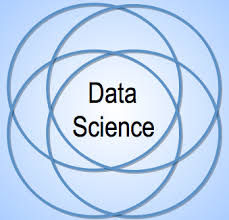
With the emergence of big data coupled with fast computing power, many decision-makers of businesses are trying to identify different ways to attain their business goals. These days, whenever they want to launch something new, they’re looking to data science professionals in order to get demand, market, target demographic, among others. You can think of data science as an umbrella term for all methods and techniques that professionals use to analyze huge amounts of data in order to derive insights from them. It’s the general practice of utilizing scientific tools and techniques to draw insights from or find patterns in data. Almost everything is covered by this field – from preparing raw data for analyzing to presenting insights gained from analytics.
2- What is artificial intelligence?
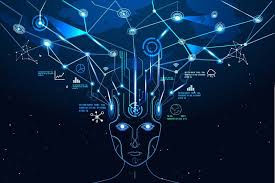
Artificial intelligence or AI is a broad term. At its core, it attempts to make machines think like human beings. Any algorithm, code or technique that enables computers to develop, demonstrate, and mimic human cognitive behaviors or abilities falls under the category of artificial intelligence. An artificial intelligence-powered system can be as complex as driverless cars or as simple as software which plays chess. Within artificial intelligence, there is machine learning which is considered the most exciting part of the field today and for reasons. With the help of machine learning, artificial intelligence has made a significant number of breakthroughs which once seemed nearly impossible. It’s the key reason that computers can steer a car or spot one of your friend’s face in a photo.
3- Data science and artificial intelligence – How they are different
![]()
Here are some of the major differences between data science and artificial intelligence. It’s important to understand that both of these are extremely popular choices in the tech landscape and the differences mentioned below are completely based on their operational nature.
- Data science is all about capturing, analyzing, and deriving insights of massive amounts of data whereas artificial intelligence involves providing the machines with data in order to train them.
- Data science involves identifying patterns in data whereas artificial intelligence involves observing intelligence in data.
- In the graphic aspect, data science involves representation in different graphical formats whereas in artificial intelligence, algorithm network nodes are used in the representation.
4- The relation between data science and artificial intelligence
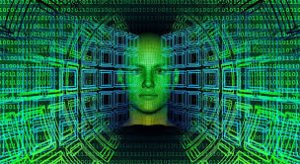
Data science is an interdisciplinary domain which requires concepts and skills used in disciplines like statistics, visualization, machine learning etc. Data science is a general term for methods and process which analyze and manipulate data. It empowers artificial intelligence to identify appropriate information and meaning massive volumes of data with higher efficiency and speed. As for the term data science and artificial intelligence, it’s quite easy to become confused. Unfortunately, both of these terms get discussed frequently and casually by some people more interested in hype instead of solving problems, making the scenario even more confusing.
If you want to step into any of these fields, here is the think you need to keep in mind – forget the term artificial intelligence for the time being because machine learning is the biggest and most practical application for this field today. So, machine learning is the technology businesses expect candidates to understand. You can consider data science as the way you wish to implement that machine learning. It’s the real-world application of artificial intelligence with the objective of developing products/services for people.
One may argue that data science professionals were working long before the appearance of artificial intelligence as a functional option and there’re applications that don’t exclusively benefit from contemporary artificial intelligence. In the context of data science, the problem with the conventional approach is that there are massive amounts of data to be analyzed and a limited number of data science professionals to do it. Non-intelligent methods are very time- and talent-intensive. They can take a huge to come up with results when answers are really time-sensitive. As a matter of fact, artificial intelligence does need data science professionals to set up and monitor, but real-time analytics can be powered by its algorithms. And this shortens the gap between the time data is produced and the time it’s interpreted into valuable insights.
If you want to learn about an example that uses both data science and artificial intelligence, you can think of IBM Watson. It’s an AI technology which helps physicians identify key information in the medical records of a patient quickly to offer relevant evidence, as well as, explore treatment options. It takes in the medical records of a patient first and then comes up with personalized and evident-based recommendations fueled by information from a collection of 15+ pages of texts, 200 textbooks, and 300+ journals that provide the doctors with instant access to a huge amount of information personalized to the treatment plan of the patient.
5- What should you do to become a successful professional?
![]()
If you consider any subset of artificial intelligence – from basic machine learning to deep learning, you can see that all these recent advancements have created a huge need for talent, creating a substantial demand and supply gap of data science professionals. Even if you consider data scientists, who belong to the highly trained segment of the data science field, most likely it’s the youngest of generations who have actually been trained in the advanced artificial intelligence approaches, narrowing the present pool of talent even further.
As the artificial intelligence is steadily becoming transformational across different end-markets – from consumer platforms to enterprise, from robotics to cybersecurity, and more – the demand for data science professionals is growing at an extremely fast pace. The role of data science professionals in the context of artificial intelligence now assumes a new level of importance.
These days, data science professionals are automating different types of lower level tasks and handling more complex and higher level tasks. In that process, they’re both automating tasks done manually be developers or users previously and enabling them to create or use increasingly powerful products.
In the short-term, artificial intelligence is creating an actual need for data science professionals with real talent. In the long-run, data science professionals will likely to evolve from their present roles with the advancements taking place in the artificial intelligence landscape.
So, if you want to start your career in any of these fields, you’ve to be prepared to show your prospective employers that you’ve the right skills together with a deep understanding of the concepts that would go along with your abilities. But you should always remember that skills, as well as, understanding don’t come from following a specific set of steps. You can only attain them, at an exceptional level, by solving real-life business challenges. You’ve to work on projects which convert raw data into features that automate learning. So, start with the basics of finding an appropriate project that would enable you to work on both data science and artificial intelligence technologies.
There’re lots of people who may think that following a set plan will help them greatly to get them their skills faster but in reality, there’s no quicker way to learn what’s needed than struggling through the problem first and then trying to find the solution. So, focus on the problems related with both data science and artificial intelligence, and try to solve them. Try to build real-world applications in order to solve them, if possible, to maximize your learning.
Final Thoughts

Both the fields of data science and artificial intelligence are heavily impacting almost every industry. If you want to step into any of these fields, probably this is the best time to start your journey in order to become a part of the transition. Businesses are shifting their resources from highly expensive tools to open-source platforms. Existing tools are being scaled or replaced by open-source platforms to manage and analyze huge amounts of data. You can see from the present trends in the tech domain that both of these fields offer massive opportunities. However, it’s important to remember that becoming a data science professional or an artificial intelligence professional isn’t easy at all and doesn’t involve working on fancy forecasts and models always. A career in any of these fields comes with a steep learning curve. But if you think you can put in your best effort to maximize your learning and stay motivated throughout the journey, keep the above steps in mind and jump in.
. . .
To learn more about data science, click here and read our another article.
The post 2 Immersive Topics: Data Science and Artificial Intelligence appeared first on Magnimind Academy.
]]>The post What would be the future jobs for data science in terms of artificial intelligence and machine learning? appeared first on Magnimind Academy.
]]>Before taking a deeper look into future jobs for data science professionals, let’s take a closer look into how artificial intelligence and machine learning have evolved over the years and what lies ahead in store for these domains.
Artificial Intelligence – its origin and evolution
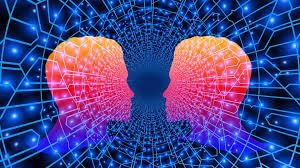
It was mathematician and scientist Alan Turing who spent a lot of time after the Second World War on devising the Turing Test. Though it was basic, this test involved evaluating if it was possible for artificial intelligence to hold a realistic conversation with a person, thus convincing them that they were also human.
Since Turing’s Test, AI was restricted to fundamental computer models. It was in 1955 when John McCarthy – a professor at MIT, coined the term “artificial intelligence”. During his tenure at MIT, he built an AI laboratory. Full List Processing (LISP) was developed by him there. LISP was a computer programming language for robotics intended to provide expansion potential as technology improvements happened with time.
Though promise was shown by some base model machines – be it Shakey the Robot (1966) or Waseda University’s anthropomorphic androids WABOT-1 (1973) and WABOT-2 (1984), it wasn’t until 1990 when Rodney Brooks revitalized the concept of computer intelligence. But it took many more years for artificial intelligence to evolve as it was only in 2014 that Eugene, which was a chatbot program designed by the Russians, was able to successfully convince 33% of human judges. According to Turing’s original test, more than 30% was a pass, though plenty of room was left for stepping it up in the future.
From its humble beginnings, artificial intelligence (AI) has evolved as perhaps the most significant technological advancement in recent decades across all industries. Be it the robotics aspect of AI, or the implementation of machine learning (ML) technologies that are driving useful insights from big data, the future seems to hold a lot of promise. In fact, the enhanced information extracted from large chunks of data is helping companies today to mitigate supply chain risks, improve customer retention rates, and do a lot more.
An example of how these technologies could change the way we live and work became evident when Amazon introduced its Alexa in the workplace. However, many believe that the AI-powered, voice-activated device signals just the beginning. Thanks to NLP (natural language processing), which is made possible via machine learning, modern computers, hi-tech systems, and solutions can now know the context and meaning of sentences in a much better way. As NLP becomes more improved and refined, humans will start communicating with machines seamlessly exclusively via voice without the need of writing code for a command. Thus, professionals who can design and test devices based on NLP and voice-driven interactions are likely to be in high demand in the future.
With the growing interest and implementation of artificial intelligence in various fields and the promising future the global machine learning market (predicted to grow to $8.8B by 2022 from $1.4B in 2017, according to a report by Research and Markets), there’s bound to be a wide variety in future jobs for data science professionals as well those specializing in AI and ML.
Future jobs to consider in the field of data science with an emphasis on AI and ML
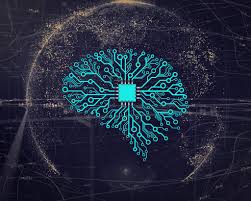
Data scientists would continue to be in demand though a new position of machine learning engineer is giving it a tough competition as more and more companies are adopting artificial intelligence technologies. In many places where data specialists are working, this relatively new role is emerging slowly. Perhaps you are now wondering who a machine learning engineer is, what the skill requirements for this position are and what kind of salary is on offer.
Let’s try to find answers to these questions.
Who’s a Machine Learning Engineer?

These are sophisticated programmers whose work is to develop systems and machines that can learn and implement knowledge without particular direction.
For a machine learning engineer, artificial intelligence acts as the goal. Though these professionals are computer programmers, their focus goes further than particularly programming machines to execute specific tasks. Their emphasis is on building programs that will facilitate machines to take actions without being explicitly directed to carry out those tasks.
The roles performed by these professionals include:
- Designing machine learning systems
- Studying and changing data science prototypes
- Choosing
- Doing research and applying suitable ML tools and algorithms
- Selecting fitting datasets and methods for data representation
- Developing machine learning applications that are consistent with the requirements
- Conducting machine learning experiments and tests
- Carrying out statistical analysis and modifying them using test results
- Training and retraining systems, as and when needed
- Broadening the existing machine learning frameworks and libraries
- Being well-informed on the developments in the domain
![]()
When it comes to the skill sets that machine learning engineers need, there are some that are common with those required by data scientists such as:
- Programming Languages: Though Python is considered the leading language, you’ll probably have to learn R, C++, and Java. At some point, you’re likely to work on MapReduce as well.
- Statistics: You’ll need to be familiar with vectors, matrices, matrix multiplication, etc.
- Data Cleaning and Visualization: With data cleansing, you’ll help to boost the efficiency of companies and even save their precious time. Data visualization would be equally important as it could have a make-or-break effect when it’s about the impact of your data.
- Machine Learning techniques: You’ll need to have a good understanding of machine learning techniques such as decision trees, supervised machine learning, logistic regression, etc. Knowledge of deep neural network architectures is equally important as believed to be the next level in the domain.
- Big Data Processing Frameworks: As a humungous amount of data gets generated today at a great speed, you need frameworks such as Spark and Hadoop to handle Big Data. Since a majority of organizations these days are using Big Data analytics to get hidden business insights, you need to be confident in your use of these Big Data processing frameworks as a machine learning
- Industry Knowledge: Even when you have all the technical skills mentioned above, you won’t be able to channel them productively if you lack business acumen and don’t know what elements contribute toward a successful business model. Be it helping the organization discover new business opportunities, or being able to distinguish the potential challenges as well as existing problems that need to be solved for the business to keep going and growing, you should know how the industry functions and what will benefit the business.
- Computer Vision (CV): ML and CV are Computer Science’s two core branches that can function and power extremely sophisticated systems that depend exclusively on ML and CV algorithms. However, by combining the two, you can do much more, which makes it important to have a solid understanding of both ML and CV.
In addition to the above, you must have the following ML engineer skills:
- Language, Video, and Audio Processing: This includes having good control over libraries like NLTK, Gensim, and techniques like sentimental analysis, word2vec, and summarization.
- Signal Processing Techniques: You should have a robust understanding of these techniques, which would be needed to solve different problems.
Additionally, you should have knowledge of applied Mathematics (with emphasis on Algorithm theory, quadratic programming, gradient descent, partial differentiation, convex optimizations, etc.), software development (Software Development Life Cycle or SDLC, design patterns, modularity, etc.), and time-frequency analysis as well as advanced signal processing algorithms (like Curvelets, Wavelets, Bandlets, and Shearlets).
Other jobs
![]()
Apart from data scientist and machine learning engineer, some other future jobs for data science professionals could be
- Data Architect/Data Engineer
- Data Analyst
- Big Data Engineer
- Artificial intelligence Experts
- Information Security Analysts
- Process Automation Experts
- Robotics Engineers
- Human-Machine Interaction and User Experience Designers
- Blockchain Specialists
Thus, with the increasing adoption of artificial intelligence and machine learning, there won’t be any dearth of future jobs for data science professionals.
. . .
To learn more about data science, click here and read our another article.
The post What would be the future jobs for data science in terms of artificial intelligence and machine learning? appeared first on Magnimind Academy.
]]>The post Immersive Virtual Reality AI and Its Near-Coming Effects appeared first on Magnimind Academy.
]]>However, there’re still some technical issues with virtual reality related to optimization and rendering. Until now, all advancements in the field were focused mainly on better hardware and uninterrupted and increased frame-rate. However, recently an idea of using AI for virtual reality has emerged, which will bring a multitude of benefits. The main reason is that big data and AI are perfectly suited for pattern recognition and hence, similar pattern generation. This method of working can generate a new bunch of advantages.
Over the next few years, virtual reality applications will likely to become increasingly sophisticated with the emergence of more powerful devices that are capable of developing higher quality visuals. The understanding of how we can usefully interact and navigate within virtual environments will also evolve, resulting in the development of more natural methods of exploring and interacting with virtual space. Here’re some near-coming effects of immersive virtual reality experiences boosted by the power of AI.
1- Hazard warnings

Apart from their own ability to judge a situation within a fraction of a second, humans have developed a diverse range of mechanisms that can help them stay safe from danger. However, these judgments that are usually called intuitions aren’t infallible.
What if a machine that has a combined experience of thousands of people could overtake such a task? Such a development can save millions of soldiers on the battlefield by helping them in anticipating the moves of opponents and alerting them in advance. AI has already been employed in different military strategies. But with this implementation, battlegrounds of the future will become a more high-tech environment.
2- Customized simulators

AI combined with virtual reality/augmented reality is a strong combination that can be used as a tool for educating the next generation of pilots, surgeons, among others. Today, with the help of virtual reality, we can learn to drive a car safely, without endangering our or the instructor’s life. In addition, for some activities, this also proves to be an effective way of reducing costs, as some real-life activities involve expensive supplies.
AI can replace numerous situations that occur randomly and learn from the student’s behavior. As the student gets better, the system will present increasing difficult situations. AI has the ability to improve simulated training by incorporating more data points, comparing as well as contrasting different techniques, and by personalizing the education. The improved system will act more like a customizable trainer instead of a static simulator. With a simple headset and a set of sensors, we should be in a position to learn everything. Virtually anyone should be able to get access to world-class coaching at any sporting or academic discipline.
3- Physical environment mapping

Today some furniture providers offer apps that provide the users with the ability to try out furniture, after carefully inputting the size and obstacles such as doors and windows of their rooms. What if the process becomes faster and more accurate by just scanning the room with a user’s phone?
AI has the ability to help map environments in real-time and merge those results with a virtual world. The result is that users get a fully immersive virtual reality experience with real-world structures. The fledgling system comes with the ability to generate CAD-quality models of a house so that users can try decorations and furniture before they buy. With a bit more training, the system can offer on-demand design services. For instance, the users select a style and the necessary things, and the system comes up with a complete plan, much like what an interior designer does.
4- Game development

As a primary application of immersive technologies, it’s safe to assume that gaming will continue to be one of the major driving forces for virtual reality’s progression, and in this endeavor, AI can help to a great extent. First, it’ll replace the present method of animation. Right now, two methods are applied for animating characters – manual CG work and motion capture.
Motion capture is restricted to the physical capabilities of the actor while handcrafted animations are highly laborious. Motion capture involves recording a huge array of movements which are essentially repeated time and time again. New systems utilize machine learning to merge a huge library of the stored movements and then map them onto characters that are being developed. This’ll open up a new domain of realistic animation in the context of cartoons, video games, and virtual reality environments. Even non-player characters may become part of the story in a more believable and relatable way.
5- Immersive traveling experience

Virtual reality isn’t only about beautiful worlds where people can lose themselves. It can also come up with an amazing replica of locations in the real world that are costly or somewhat impossible to reach for the common people.
Development of immersive travel experiences can be as close as it gets to the actual thing for some demographics. It can also become a new type of entertainment for people who’re passionate about traveling.
6- True socializing

Facebook’s heavy invest in virtual reality with its acquisition of Oculus Rift, we’ve already received a hint about that one day, social media will likely to get a boost from the virtual reality immersive experiences powered by AI.
In the future, AI may have the task of designing users’ social media avatar by considering both their pictures and preferences. In the near future, we may be in a position to meet our friends in virtual environments. The concept requires mind-boggling processing power, but AI together with virtual reality has the ability to make it possible.
7- Rendering optimization

One of the major challenges in virtual reality/augmented reality is delivering realistic graphics with present day’s consumer hardware. A huge amount of complexity results into lag and pixelated images that in turn results into problems for virtual reality headset wearers. As a result, most of the virtual reality experiences available today are lacking in convincing detail and simplistic.
However, in virtual reality, AI techniques can be used for selective rendering where only some specific portions of a scene are dynamically generated. AI techniques can also help to compress images intelligently, enabling faster transmission over wireless connections without any understandable loss in quality.
8- Challenges with more immersive content

Implementation of AI for virtual reality/augmented reality is expected to offer more immersive technology which will be increasingly personalized. The drive to capture people’s attention generates two challenges. First, a lack of authority over personal data may drive the users away from the long-term adoption of the new technologies. User privacy and data controls have become key concerns for customers. Given the improved data tracking features of immersive technologies, from tracking facial expressions to eye-movements, the personal data will become at more risk, making privacy a more serious concern. Secondly, the well-being of the users will become at stake. Let’s have a look at some probable steps that can be taken to mitigate these challenges.
8.1- More authority to users about their personal data

It’s a fact that major virtual reality companies use cookies to store data, while collecting information on the browser and device type, location, among others. In addition, communication with other users in virtual reality environments is being stored and sometimes shared with third parties for marketing purposes. It leads to the necessity of a solution that acts like a buffer between companies and users.
8.2- Regulatory frameworks

The privacy concerns associated with traditional media has already started arising in immersive content. If developers aren’t willing to provide agreeable and clear terms of use, regulators need to step in to protect the consumers, as already done by some jurisdictions.
As companies develop advanced applications using immersive technologies, they should focus on the transition from using metrics that only measure the amount of user engagement. Alternative metrics may include something like a net promoter score for the software that would indicate how strongly consumers recommend those services to their friends based on their own experience with them.
Final thoughts

Lagging hardware and costly barriers have caused virtual reality to become overhyped over the last few years. With the implementation of AI, organizations can overcome earlier technical barriers while improving realism. These are only some of the possible applications of AI in virtual reality.
As the technology becomes more widely accepted, we can expect to see more innovative applications in the near future. However, more work on the part of the developers will be required if immersive technologies are to generate more interactions with the content and media.
. . .
To learn more about artificial intelligence, click here and read our another article.
The post Immersive Virtual Reality AI and Its Near-Coming Effects appeared first on Magnimind Academy.
]]>The post Invaluable Societal Benefits Of AI appeared first on Magnimind Academy.
]]>However, there’re lots of people who’re understandably concerned about the actual impact of artificial intelligence – whether it’s good for the society or not. Finding a proper answer to this question has become even more important as there’re individuals who’re deeply skeptical about AI’s potential and are wary of how the technology is going to impact the society.
Like any other technological aspect, the debate is complex for AI too. And of course, there’re benefits and issues along the way, as artificial intelligence becomes more pervasive in human lives.
We should always remember that when there’re challenges, there’re some good opportunities too. And we can’t afford to look at AI with skeptical eyes. Rather, we’ve to understand the benefits it has already offered to our society.
1- Major societal benefits

Some of the key societal benefits that artificial intelligence has brought along are outlined below.
1.1- Healthcare

Healthcare has always been one of the focal points of AI. It boasts of a huge amount of data to populate and analyze based on which computational sophistication has been improved by designers.
For instance, Merantix, a German company, applies deep learning to medical issues. It offers an application capable of detecting lymph nodes in the human body in CT (Computer Tomography) images. If the detection is done by humans, the charge would be prohibitively expensive. In this scenario, deep learning trains computers on datasets to learn what an irregular-appearing versus a normal-looking lymph node is. Once done, radiological imaging specialists apply this knowledge to real patients and identify the extent to which somebody is at risk of carcinogenic lymph nodes, at a significantly lower cost.
AI tools can predict substantial challenges lying ahead in advance and offer resources for patient education and proactive interventions, thus helping people to maintain their wellbeing.
1.2- Transportation

Transportation is a field where artificial intelligence together with machine learning has produced major innovations. Autonomous vehicles like cars, buses, trucks etc use advanced capabilities that offer features like lane-changing systems, automated vehicle guidance, automated braking, use of sensors and cameras for collision avoidance, and analyzing information in real time by using AI, among others.
For instance, AI and LIDARs (light detection and ranging systems) play key roles in collision avoidance and navigation. These instruments provide information that helps to keep fast-moving vehicles in their designated lanes, thus helping them avoid other vehicles and applying brakes when needed etc, thus and ultimately saving human lives by reducing road accidents.
1.3- Prediction of natural disasters

AI is considered as one of the perfect sources of predicting natural occurrences. There’s an AI model that can almost perfectly guide you what the weather will be for the next couple of days, which was almost unimaginable before the advent of artificial intelligence.
There’s also an incredible system that can predict, based on the simulation of tectonic plates of the earth, the time of volcanic eruptions. There’re AI-enabled projects that gather data for magnetometers of the phone and send it for analysis based on which successful predictions about earthquake can be made.
1.4- Farming

Farming is another sector that has been heavily benefitted from AI. This is an industry full of challenges like competition for natural resources, plateauing agricultural productivity, and rapidly growing population.
In this scenario, consider FarmLogs, a farming management app presently used by many farmers in the US, which uses technology and data to help farmers track the weather, monitor fields, obtain insights into soil utilizing historical satellite imagery, and even identify irregular plant growth. Real-time data analytics help farmers to maximize their crop yields and thus, in turn, their profits too.
1.5- Strengthened economy

Probably all of us have seen headlines that state something like adoption of AI will lead to unemployment. In reality, this is far from the truth. Artificial intelligence promotes a gradual evolution in the job field, which will be positive with the companies planning ahead.
Humans will still work, but they’ll be working more efficiently with the help of AI. Besides this unparalleled combination of machine and human, there will be a natural requirement of trained people who’ll be supervising the systems, apart from those who’ll actually do certain jobs. It’ll gradually result into more job openings, thus solidifying the economy.
1.6- Smart cities

AI is being implemented by various authorities to optimize different facilities. Artificial intelligence is considered as a way to deal with large volumes of data and to identify efficient ways of responding to various public requests. Instead of addressing service issues in ad hoc manners, authorities are implementing AI to be proactive in how urban services can be provided.
Smart city applications often use artificial intelligence to improve environmental planning, service delivery, energy utilization, resource management, and crime prevention, among others. Some of the top applications include intelligent traffic signals, e-governance applications, smart meters for utilities, Wi-Fi kiosks etc.
1.7- Overall lifestyle

With the increasing implementation of AI in different segments of society, overall lifestyle of the humans gets enhanced. Some of the mundane tasks such as data entry or answering emails can be performed by intelligent assistants, freeing up precious time for humans to focus on creative aspects of the work.
Smart homes can be made capable of providing better security and reducing energy usage that would greatly promote the concept of a greener environment.
2- Steps we should take

With all the AI benefits, there comes some significant disadvantages as well, but that’s natural for any technology.
The question that is making lots of people worried is this: With too much of authority given to the machines, how can implementation of AI be made more favorable to the society? Or, at the least, how to make it not act like a threat to human life and property?
2.1- Transparency is the key

Results can be questioned even with a greatly planned decision-making system, if the reasoning can’t be demonstrated. For example, if AI has diagnosed an illness, the patient can always ask for a proper reasoning, failing which would lead to non-transparency of the system.
Assuming that artificial intelligence will be making hugely important decisions, implementation of AI has to be perfectly planned and the results have to be transparent and explainable to be accepted by the society. In addition, AI should be use data science to improve the living conditions.
2.2- Importance of AI curriculum

Artificial intelligence should be used where it’s more effective and efficient to employ a machine to handle the task compared to engaging a human brain to perform it. So, companies should ensure scenarios where success gets replicated in raising the technology, in terms of both costs and resources.
High-quality protocols should also be developed by data scientists when it comes to selecting training data and taxonomies for AI. If it’s trained with patchy, skewed or flawed examples, the results will be going to be unreliable. So, it also needs to be ensured that the data is relevant, appropriate, accurate, diverse, accurately labeled, and representative.
For instance, if an AI-enabled system for hiring recommendations is trained on the data of present and past employees solely, and those employees aren’t diverse (e.g. predominantly older white females), the resulting model would likely be biased unfairly against candidates who’re young, racial minorities, and male. Even after an AI-enabled system is launched, the risk and quality of unfair bias need to be assessed by human overseers in ongoing new training data.
In addition, as we aim to improve the fairness and efficacy of AI with proper training data to benefit the society, we should also keep in mind that fundamental privacy principles are closely related to the massive amounts of data used by AI. Usage and retention of personal data needs to be minimized, while limiting the ways in which that data could be used in the future. Big data analytics solutions include the remedy of these problems.
Final takeaways
It’s important to note that AI isn’t able to learn on its own and thus, humans are required to help any type of artificial intelligence obtain a better understanding of all types of jobs, processes, things etc. When it comes to maximizing societal benefits, perhaps the best approach to leverage both AI systems and human-only systems is to do what each of them does best. Leveraging artificial intelligence as well as the best of human ability and values promises greater progress in accountability, transparency, and fairness. And this will be playing a crucial role in building a strong trust for AI in the society.
For instance, AI can be put to work to do the time-consuming analysis of the huge amount of information available. Building a culture of continuous learning and collaboration is crucial to take maximum advantage of artificial intelligence. This combined approach is what will make processes and people even more important than they are today. And to make the most out of the technology, society needs to deploy AI that puts humans first, protects human rights, and fosters humans’ trust. Immersive data science experience is proof that we can rely on artificial intelligence.
. . .
To learn more about artificial intelligence, click here and read our another article.
The post Invaluable Societal Benefits Of AI appeared first on Magnimind Academy.
]]>